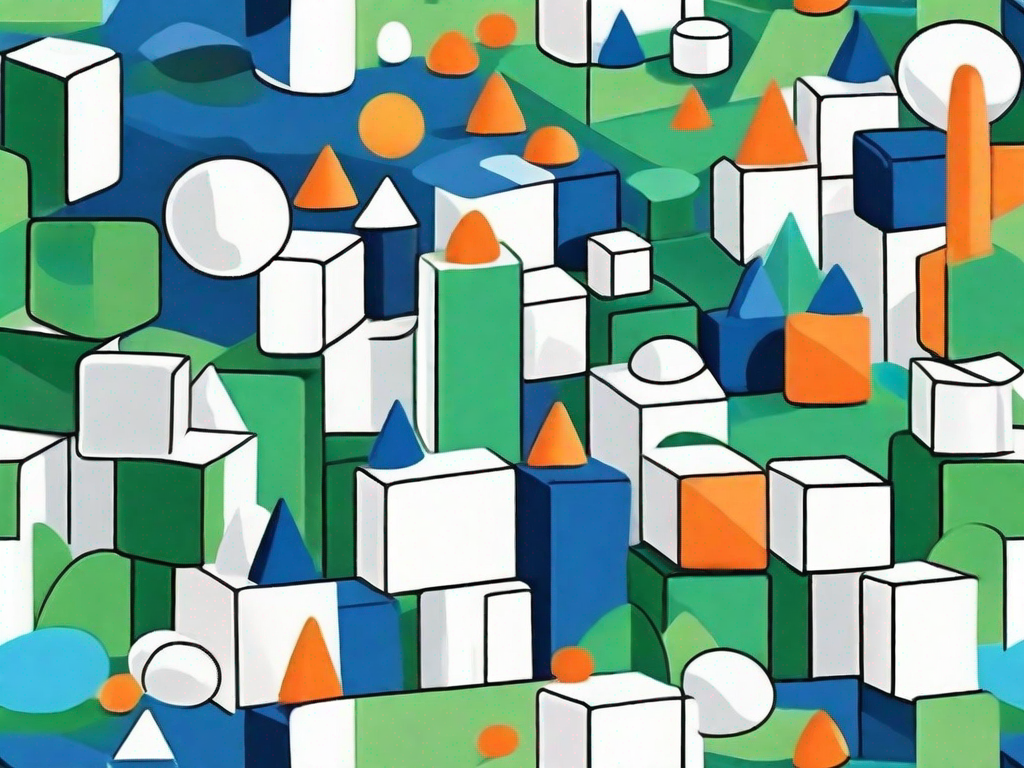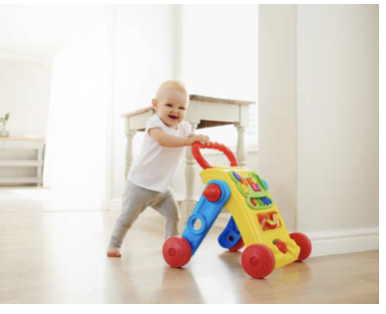Toddlers are full of curiosity and energy, constantly exploring and learning about the world around them. As parents and caregivers, it’s important for us to provide them with the tools and experiences they need to support their development. One such tool that has proven to be essential for toddler development is soft blocks.
Understanding the Basics of Toddler Development
Before diving into the benefits of soft blocks, let’s take a moment to understand the basics of toddler development. During this early stage of childhood, toddlers go through significant physical, cognitive, emotional, and social changes. It is a time of rapid growth and foundational skill-building that will shape their future development.
Physical development in toddlers involves the growth and maturation of their muscles, bones, and motor skills. They go from being dependent on others for mobility to gaining the ability to walk, run, climb, and manipulate objects with their hands. This newfound physical independence opens up a whole new world of exploration and discovery for them.
Cognitive development refers to the growth of a toddler’s thinking, problem-solving, and language skills. They start to understand cause and effect, imitate others, and use simple words and phrases to communicate their needs and desires. Their curiosity and eagerness to learn are at an all-time high during this stage.
Emotional development involves the formation of a toddler’s self-identity, self-awareness, and ability to regulate their emotions. They experience a wide range of emotions, from joy and excitement to frustration and anger. It is important for caregivers to provide a nurturing and supportive environment that helps toddlers develop a sense of security and emotional well-being.
Social development in toddlers revolves around their interactions with others. They begin to develop social skills such as sharing, taking turns, and playing cooperatively with their peers. They also form attachments to their caregivers and start to understand the concept of empathy and friendship.
The Role of Play in Early Childhood
Play is the primary way through which toddlers learn and develop. It allows them to explore their surroundings, experiment with cause and effect, practice new skills, and engage in imaginative and creative play. Play is not just about fun; it is a vital part of their overall development.
Through play, toddlers develop their physical abilities by running, jumping, and climbing. They also enhance their cognitive skills by engaging in problem-solving activities, such as building blocks or completing puzzles. Play provides opportunities for them to express their emotions, whether it’s through pretend play or engaging in physical activities to release pent-up energy.
Furthermore, play helps toddlers develop their social skills by interacting with others, learning to take turns, and resolving conflicts. It fosters their creativity and imagination as they create stories, role-play, and engage in make-believe scenarios. Play is a natural and enjoyable way for toddlers to learn and grow in all areas of development.
Key Developmental Milestones in Toddlers
During the toddler years, children reach important developmental milestones. These milestones include walking independently, using simple words and phrases to communicate, demonstrating increased independence, and refining their fine and gross motor skills. By providing them with appropriate toys and activities, we can support and enhance these milestones.
Walking independently is a major milestone that usually occurs around the age of 12 to 15 months. It marks a significant shift in a toddler’s physical abilities and opens up a whole new world of exploration. As they gain confidence in their walking skills, they become more adventurous and curious about their surroundings.
Language development is another crucial milestone during the toddler years. They start with simple words and phrases, gradually expanding their vocabulary and sentence structure. Communication becomes a powerful tool for them to express their needs, wants, and thoughts, leading to increased independence and understanding of the world around them.
Toddlers also become more independent during this stage. They want to do things on their own, such as feeding themselves, dressing themselves, and exploring their environment without constant assistance. Encouraging their independence while providing a safe and supportive environment helps them develop a sense of autonomy and self-confidence.
Fine and gross motor skills continue to develop and refine during the toddler years. They learn to manipulate objects with their hands, such as stacking blocks or scribbling with crayons. Their hand-eye coordination improves, allowing them to catch a ball or use utensils for eating. Gross motor skills, such as running, jumping, and climbing, become more coordinated and controlled.
By understanding these key developmental milestones, caregivers can provide appropriate toys, activities, and experiences that support and enhance a toddler’s growth in all areas. Creating a stimulating and nurturing environment helps toddlers thrive and reach their full potential.
The Importance of Soft Blocks in Play
Soft blocks are not only fun to play with but also provide numerous developmental benefits for toddlers. Let’s explore some of the ways soft blocks support their overall development.
Soft Blocks and Sensory Development
Toddlers are naturally inclined to explore objects through their senses. Soft blocks offer a variety of textures, colors, and shapes that stimulate their sensory development. By feeling the different textures and manipulating the blocks, toddlers can enhance their tactile and proprioceptive senses.
Furthermore, soft blocks often have visually appealing patterns and colors that capture their attention and stimulate their visual development. As they explore the blocks with their hands and eyes, they are strengthening the connection between their senses and brain, promoting sensory integration.
Encouraging Motor Skills with Soft Blocks
Soft blocks also play a crucial role in developing a toddler’s motor skills. As they grasp, stack, and manipulate the blocks, their fine motor skills are being honed. This helps train their hand-eye coordination, dexterity, and finger strength, which are essential for activities such as writing, drawing, and self-care tasks later on.
Additionally, soft blocks are lightweight, making them easier to handle for little hands. This encourages toddlers to experiment with various grasping techniques and build their gross motor skills as they move and interact with the blocks.
Cognitive Benefits of Playing with Soft Blocks
In addition to their physical development, soft blocks offer cognitive benefits that can support a toddler’s overall intellectual growth.
Enhancing Problem-Solving Skills
Soft blocks provide an excellent opportunity for toddlers to engage in problem-solving and critical thinking. As they try to stack the blocks in different ways or figure out how to fit them together, they are developing their spatial awareness, logical thinking, and problem-solving skills. This type of play encourages them to test and adjust their strategies, fostering a growth mindset.
Promoting Spatial Awareness
Through manipulating soft blocks, toddlers become more familiar with concepts such as size, shape, and spatial relationships. They learn about concepts like “on top,” “next to,” and “underneath.” This spatial awareness lays the foundation for later skills such as understanding measurements, organizing objects, and following directions.
Emotional and Social Advantages of Soft Blocks
In addition to the physical and cognitive benefits, soft blocks also contribute to a toddler’s emotional and social development.
Fostering Creativity and Imagination
Soft blocks offer endless possibilities for imaginative play. Toddlers can stack them up to build towers, create imaginary worlds, or use them as props in their pretend play. Engaging in imaginative play with soft blocks fosters creativity, promotes storytelling skills, and allows children to express themselves freely.
Soft Blocks and Cooperative Play
Playing with soft blocks can also encourage cooperative play and social interaction among toddlers. They can work together to build structures, engage in turn-taking, and learn how to share and collaborate. These early experiences lay the foundation for developing social skills, empathy, and effective communication later on.
Choosing the Right Soft Blocks for Your Toddler
When selecting soft blocks for your toddler, it’s crucial to consider their safety and developmental needs.
Safety Considerations for Soft Blocks
Ensure that the soft blocks are made from non-toxic materials and are free from small parts or choking hazards. Opt for blocks that have been safety tested and meet the necessary safety standards. Regularly inspect the blocks for wear and tear, replacing any damaged or broken pieces.
Tips for Introducing Soft Blocks to Toddlers
When introducing soft blocks to your toddler, create a safe and inviting play environment. Start with just a few blocks and gradually increase the complexity and number of blocks as their skills develop. Join in the play and engage in conversations, encouraging your toddler’s creativity and problem-solving abilities.
In conclusion, soft blocks are more than just toys. They are essential tools for supporting a toddler’s holistic development. From sensory stimulation to cognitive growth and social interactions, soft blocks provide a wealth of opportunities for toddlers to learn, explore, and thrive. So, let’s embrace the power of soft blocks in our little one’s playtime routine and set them up for a bright future.


